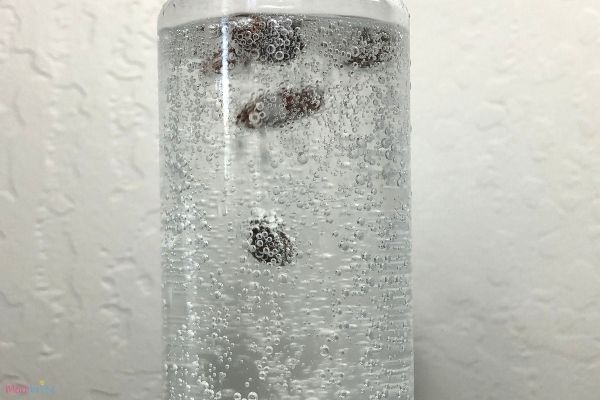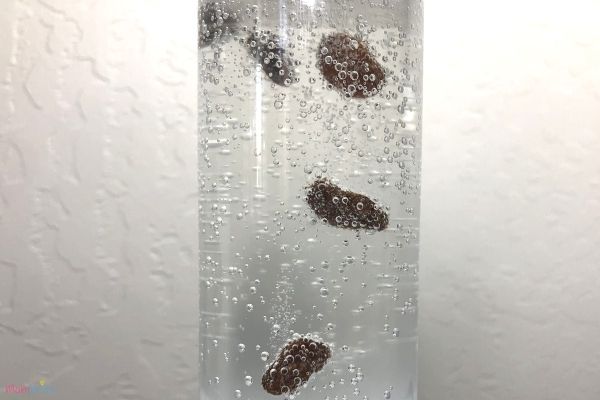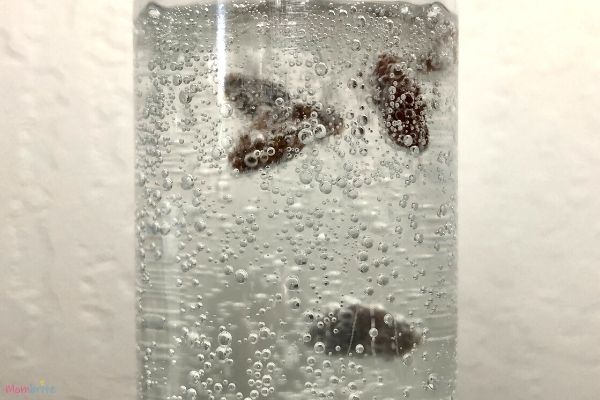Some days, nothing seems to amuse the kids. New toy? Bored with it 5 minutes later. Arts and crafts? Nah, been there done that. That’s why I am thankful for science experiments like the dancing raisins experiment that is quick and easy to set up.

There are two ways to make the raisins dance. You can pour some clear soda (like Sprite or 7Up) into a glass and drop some raisins in it. But since we didn’t have any soda in the house, we decide to use our good friends baking soda and vinegar to start the party.
The Dancing Raisins Science Experiment
Materials:
- Baking soda
- Vinegar
- Water
- Glass or clear bottle
- Raisins
- Optional: tray
Instructions:
- Fill the glass about ¾ full of water.
- Add 2 tablespoons of baking soda and mix until the solution is nearly clear.
- Optional: Place the glass on the tray to catch any solution that might bubble over.
- Pour the vinegar in the glass until the water starts to bubble.
- Add a handful of raisins to the glass.
- Watch the raisins dance!
- If the raisins stop dancing, add more vinegar to start the reaction again.

As I mentioned above, if you don’t have baking soda and vinegar, you can simply pour some clear soda in a glass and drop raisins in. I think it’s cooler to be able to control how much bubbles you generate with baking soda and vinegar though!
The kids loved watching the raisins rise up and then drop down over and over again in the glass. It’s almost like a sensory bottle for older kids – watching the raisins dance has a calming effect. Needless to say, they continued to pour the vinegar until no more bubbles form.
Science Behind Dancing Raisins Experiment
Raisins are denser than water, so they sink to the bottom of the glass. When vinegar reacts with the baking soda in the water, carbon dioxide bubbles are formed. These bubbles attach to the rough surface of the raisins and lift them to the surface.
More specifically, when the bubbles stick to the raisins, they increase the raisins’ volume without much effect on their mass. The raisins become less dense than water and increase buoyancy, so they rise to the surface.
When the raisins reach the top, the bubbles pop. This causes the raisins to be denser than water again, so they sink. But on the way down, more bubbles attach to the raisins and lift them up again to the top. This process repeats until there are no more bubbles and the raisins sink to the bottom of the glass.

Science Extensions
- Try using another object like corn kernels, rice, blueberries, etc. Do they dance like the raisins?
- Try using different types of sodas and see which one is the most effective in making the raisins dance.
I hope your kids enjoy the experiment!
For more baking soda and vinegar activities, check out:
